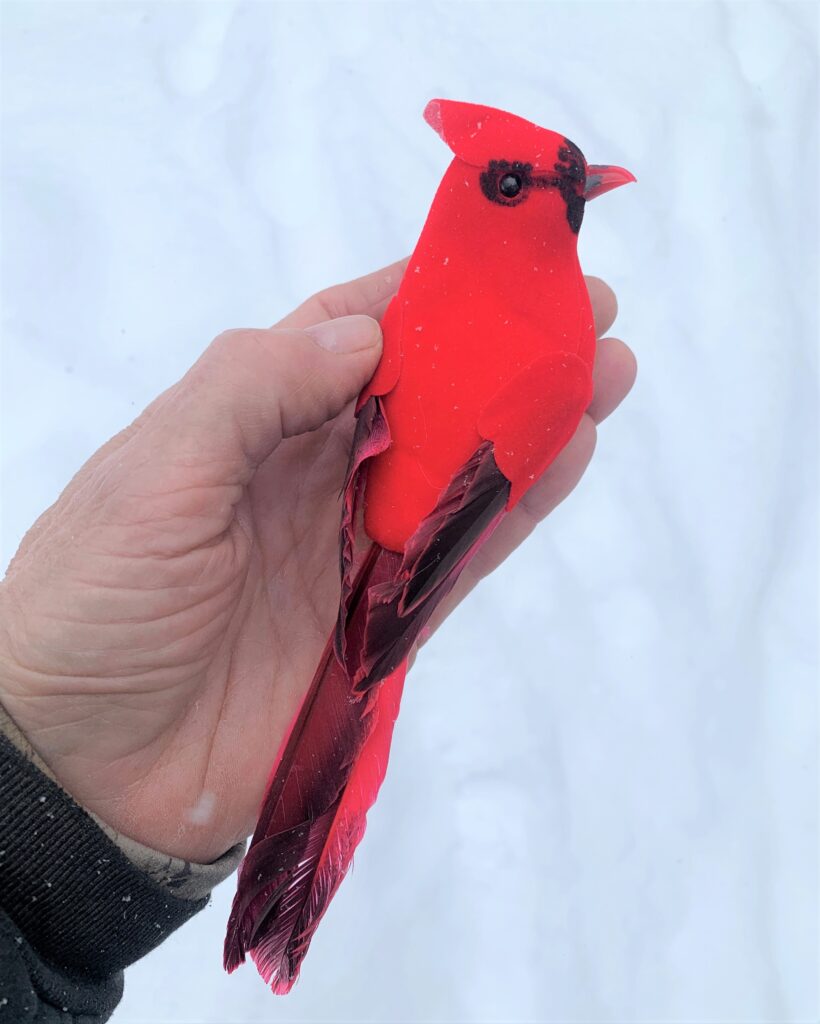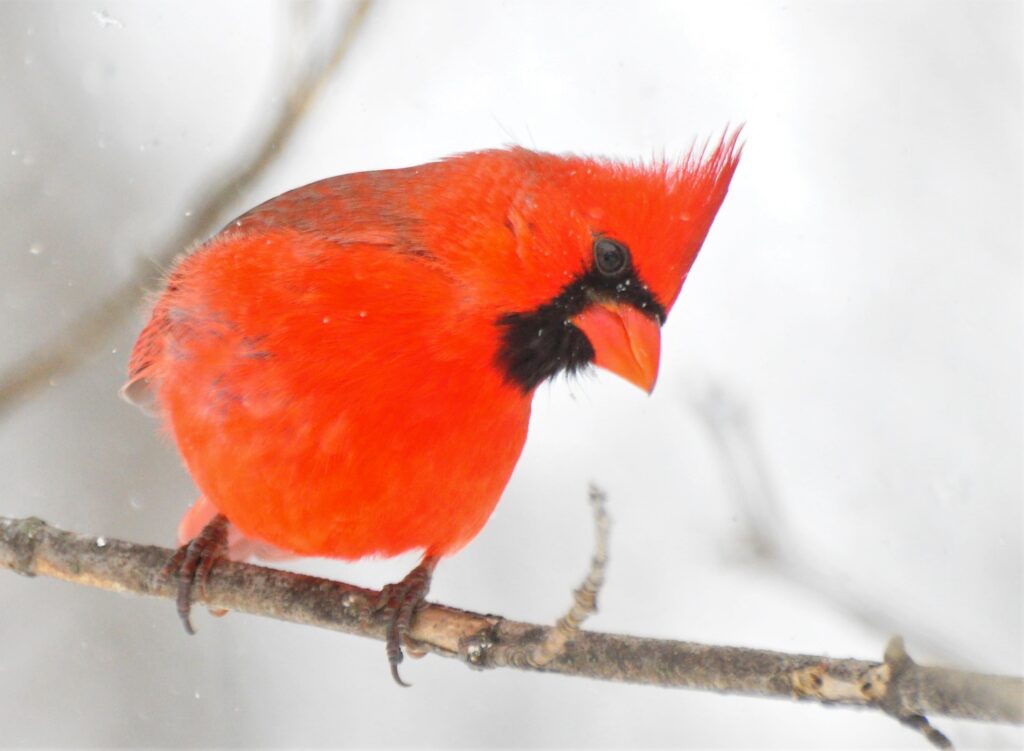Photography courtesy of Lowell Washburn, all rights reserved.
With its prominent crest, crimson plumage, and cheery song, the cardinal is one of Iowa’s most beloved songbirds. Considering the species current abundance, it seems hard to imagine that cardinals were historically rare in southern Iowa, and totally nonexistent in the north. Today, the redbird has become a common year-round resident statewide. Quick to take advantage of backyard feeders, experts claim the cardinal’s fondness for energy-rich sunflower seed has allowed birds to survive farther north during winter and may be largely responsible for the species’ dramatic expansion in range.

But although cardinals provide easy viewing opportunities as they come and go from our feeders, approaching birds from the other side of the glass may prove more difficult – especially when dealing with birds living rural woodlands. It’s hard for a bird as showy as a male cardinal to remain unnoticed in winter woodlands. And as is the case with all songbirds, cardinals contend with a long list of predators including house cats, woodland hawks and owls. Consequently, the redbird is always on the lookout for anything that may pose a potential danger. Getting an up close and personal look at birds in their natural habitats presents a challenge. Getting tight, full frame photos may seem impossible.
After conducting a couple of cardinal photo safaris producing only mediocre results, I was suddenly struck with an idea that might bring birds closer to me instead of me trying to get closer to them. That idea was to use a cardinal decoy. Why not? We use decoys to bring in ducks, geese, and turkeys. Why wouldn’t the arrival of a ‘stranger’ trigger the curiosity of a resident redbird?
Something of a specialty item, a cardinal decoy is not something you’re likely to pick up at the local sports shop. But after a bit of head scratching, I did come up with a possible solution in the form of a clip-on Christmas bird ornament. Although the cardinal effigy lacked realism, it was red, and it did have real feathers. It seemed worth a try.

Cardinals become hyperactive whenever a snow squall pops up, and last Saturday proved no exception. In spite the extremely poor lighting, I couldn’t resist giving the decoy a whirl. Clipping the ornament to the branch of some low understory, I readied the camera and dug in. The results were pleasantly surprising. When a male cardinal soon appeared, the decoy did indeed get the bird’s attention. And although the redbird was highly curious, I don’t think he was ever fooled into thinking that my cheesy ornament – I mean decoy — was another of his kind. But he did seem to wonder what in the world the creature was. Nervously flitting from branch to branch, the cardinal was soon within a few feet of the mysterious intruder and, best of all, within a few feet of me.

The cardinal’s nervous chatter quickly attracted another male and then another. Before the hour was up, I had attracted and photographed seven different male and at least five female cardinals with each new bird coming to see what all the fuss was about. Although a couple of the males were clearly agitated by the decoy’s presence, they failed to exhibit any full-blown aggression. Most of the males, and all of the females, appeared to be merely curious about the decoy. In addition to drawing other curious cardinals, the males’ agitated chatter also attracted a trio of jays and a beautiful Harris sparrow.


 Susan Judkins Josten
Susan Judkins Josten Rudi Roeslein
Rudi Roeslein Elyssa McFarland
Elyssa McFarland Mark Langgin
Mark Langgin Adam Janke
Adam Janke Joe Henry
Joe Henry Sue Wilkinson
Sue Wilkinson Tom Cope
Tom Cope Kristin Ashenbrenner
Kristin Ashenbrenner Joe Wilkinson
Joe Wilkinson Dr. Tammy Mildenstein
Dr. Tammy Mildenstein Sean McMahon
Sean McMahon